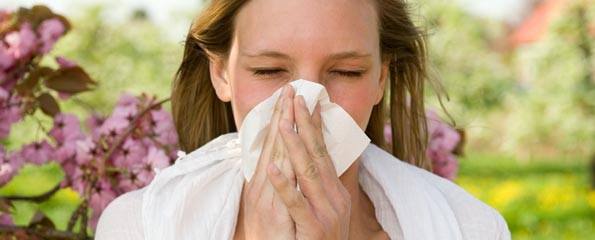AIRwatch to alert Victorian hay fever sufferers if it is safe to venture outdoors
Deakin University has set up a pollen count facility at its Melbourne and Geelong Waurn Ponds campuses to alert allergy sufferers when it is safe to go outdoors during hay fever season.
Known as Deakin AIRwatch, the facility will provide daily forecasts of the amount of pollen in the air during hay fever season (September through to March).
Deakin environmental allergist, Associate Professor Cenk Suphioglu, said the establishment of Deakin AIRwatch was timely due to ever-increasing allergy and asthma epidemics.
“The recent end of the long period of drought has coincided with numerous thunderstorm events as well as a return to peaks in severe asthma and hay fever outbreaks,” Associate Professor Suphioglu said.
“Deakin AIRwatch is the second pollen count facility in Melbourne (the first is run by the University of Melbourne and Asthma Foundation of Victoria) and the first for regional Victoria, so collectively we can advise people throughout all of Melbourne and into regional Victoria of likelihood of them experiencing allergic reactions to the pollen in the air.
“The forecasts will advise if the air pollen count each day is likely to be low, medium, high or extreme. Knowing this will enable allergy sufferers to determine if they are likely to experience symptoms of hay fever and take the necessary steps to avoid exposure, such as staying indoors, and ensure they carry their medications.”
Associate Professor Suphioglu has worked with colleagues in Deakin’s School of Life and Environmental Sciences, Dr Philip Taylor and PhD student Mr Nayyar Ahmed, to create Deakin AIRwatch, a network of two air sampling stations, one located at Deakin’s Melbourne Burwood Campus and one at the University’s Geelong Waurn Ponds Campus.
Each day pollen samples are collected and counted. The pollen counts are then coupled with the weather forecasts for the next day to come up with the pollen count forecast. The pollen count and the next day forecasts are uploaded to the Deakin AIRwatch web site. The forecasts will cover suburbs and towns within approximately 20—50 kilometre radius of the Geelong and Burwood stations.
Deakin AIRwatch will not only help sufferers in their allergen avoidance programs, but it will also collect vital data for doctors and scientists.
“We will be collaborating with a number of researchers, medical scientists and doctors whose projects will be enhanced by having access to the pollen counts we collect,” Associate Professor Suphioglu said.
(Source: Deakin University Australia)
More information
 | For more information on spring allergies, including why people get allergies, how allergies affect you and how to prevent them, as well as some useful animations and videos, see Spring Allergies. |
Dates
Tags
Created by:

 Login
Login














